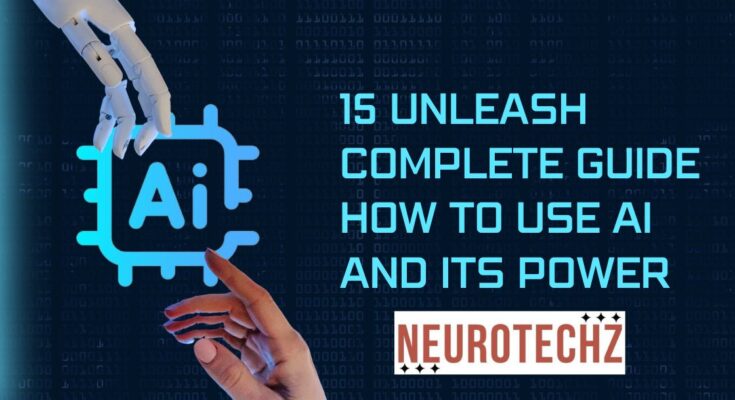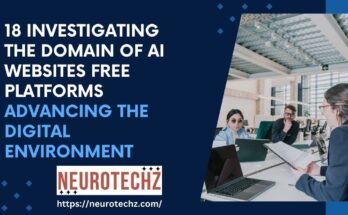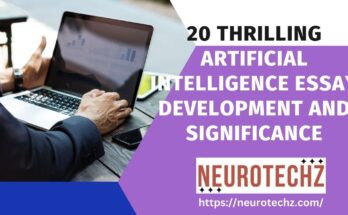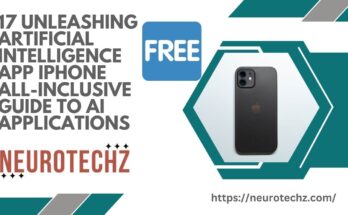How to use AI is revolutionizing businesses and daily life in the fast-growing realm of technology
Leveraging AI’s potential for creativity, efficiency, and problem-solving can help individuals and enterprises become more independent. This extensive book will cover the essential procedures and important factors to properly incorporate AI into your initiatives.
Determine Your Goals
You are establishing your goals before stepping foot in artificial intelligence. A clearly defined purpose will guide your How to use AI deployment plan, whether it is to increase productivity, streamline procedures, or provide novel solutions.
Data is king.
AI applications perform better when they have access to high-quality data, which is what How to use AI systems are built on. Achieve accuracy, diversity, and representativeness in your data about the issue you are attempting to address. Preparing and cleansing your data are crucial procedures to ensure the dependability of your AI models.
Select the Proper AI Model
Choosing the suitable How to use AI free model for your work is the most important thing. Deep learning models, machine learning algorithms, or other How to use AI approaches may be your best options, depending on your goals. To make judgments, it is essential to comprehend the advantages and disadvantages of each model.
Applying Machine Learning
Machine learning is recommended if your objective is to recognize patterns, make predictions, or classify data. Consider utilizing well-known machine learning frameworks like PyTorch or TensorFlow to speed up development. Furthermore, feature engineering and model evaluation are necessary to create reliable machine-learning models.

Take a Deep Learning Approach
Deep learning provides capacities never seen before for complex tasks, including speech recognition, natural language processing, and image recognition. Discover the ins and outs of neural networks, recurrent neural networks (RNNs), and convolutional neural networks (CNNs) to utilize deep learning fully.
Integration with Current Systems link
Complement current workflows and systems with your AI implementation. Critical components for ensuring smooth integration are APIs and compatibility. Compatibility is essential for integrating How to use AI into business procedures or mobile apps.
Protective Measures
Put strict security measures in place to shield your AI systems from attacks. To succeed in the long run, you must protect sensitive data and guarantee the accuracy of your How to use AI models.
Ongoing Education and Modification
Artificial Intelligence is a process that takes time to develop fully. Incorporate methods for ongoing learning and modification to ensure your models remain current with changing data trends. To keep your models effective, update and retrain them frequently.
Moral Issues to Take Into Account
Ethical considerations grow more critical as AI gets more widely used. Ensure that the AI you deploy respects user privacy, complies with ethical standards, and stays impartial. Accountable and transparent. How to use AI practices to bolster acceptance and trust.
Observe and assess performance.
Set up a reliable monitoring system to track your performance. How to use AI models. Ensure you regularly assess their influence on your goals, accuracy, and efficiency. This makes it possible to make prompt modifications and tweaks.
Essential Elements of How to Use AI Applications
The digital world now includes artificial intelligence (AI) as a fundamental component, revolutionizing our interactions with technology and augmenting the capabilities of apps in various fields. Because they can automate processes, offer individualized experiences, and make data-driven judgments, AI-powered apps are becoming more and more popular. The essential characteristics of artificial intelligence apps that make them useful in today’s fast-paced tech are discussed in-depth in this article.
Machine Learning Consolidation
Artificial Intelligence App uses machine learning algorithms to evaluate enormous datasets and generate predictions based on data. The applications can leverage this feature to tailor experiences, get insights from user behaviour, and enhance their functionality over time.
Speech Recognition and Translation (SRT)
Artificial Intelligence apps can comprehend and analyze human language thanks to NLP. Communicating seamlessly with users is very helpful in applications such as chatbots, virtual assistants, and language translation services.
Visio Computer
Apps provide the ability to evaluate and interpret visual data from the surroundings with computer vision capabilities. The app’s comprehension and interaction with the actual world are improved in fields like augmented reality, picture identification, and facial recognition. How to use AI app.
Mechanization and Effectiveness
Automating monotonous processes, increasing productivity, and decreasing the need for human interaction are all areas where Artificial Intelligence App shines. Because automation can result in significant time and cost savings, it is especially beneficial in business applications.
Analytics that Predict
AI apps, Artificial Intelligence Apps, predictive maintenance, recommendation systems, and other situations where forecasting is practical to use these predictive analytics capabilities.
Artificial Intelligence Applications’ Resurrection
Software developers are exploring new ground with artificial intelligence applications or AI apps. These applications use sophisticated How to use AI algorithms, machine learning models, and natural language processing to provide intelligent functions. Because Artificial Intelligence apps are more flexible and responsive to user needs than traditional apps, they can learn, adapt, and develop over time.

Applications in All Sectors
The term “Applications Across Industries” assumes fresh meaning in the quickly changing landscape of technology and innovation. Revolutionary solutions that are changing how businesses function, and customers interact with goods and services have been made possible by the convergence of many industries and cutting-edge technologies. This article highlights the remarkable effects of technological breakthroughs by exploring the various applications causing waves in multiple industries.
Medications
Diagnose support, individualized treatment plans, and predictive analytics for illness prevention are just a few AI tools transforming healthcare.
Monetary
Algorithmic trading, fraud detection, and customer service automation are just a few financial industry applications that use artificial intelligence apps to improve efficiency and security.
Knowledge
Learning experiences that are tailored to each student’s needs and offer educators insightful data are all made possible by AI-powered educational applications.
Buy
Retailers use artificial intelligence apps to improve consumer satisfaction and streamline operations for inventory control, demand forecasting, and customized shopping experiences.
Challenges and Prospects for the Future
Artificial Intelligence apps have a lot of potential, but there are also a lot of obstacles to overcome, like the requirement for transparent algorithms, ethical issues, and data protection issues. The more widely used AI in apps becomes, the more creativity it spurs and the more industries it transforms as technology progresses. How to use AI.
The Use of AI in Website Development is Growing
Artificial intelligence is completely changing the conventional approach to website creation by providing cutting-edge tools and methods. AI is becoming increasingly prevalent in several fields, including design. AI-driven design tools develop aesthetically pleasing and intuitive websites by analyzing user preferences, market trends, and brand aesthetics. It also guarantees that websites are tailored for optimal interaction, which expedites the design process.
Tailored User Experiences
A key component of providing individualized online experiences is AI’s capacity to evaluate user behaviour and preferences. Thanks to machine learning algorithms, website appearance, content, and recommendations may all be dynamically adjusted based on user interactions. By improving user engagement and conversion rates, this degree of customization eventually helps the website function more successfully.

Bots that chat and virtual assistants
Chatbots and virtual assistants with intelligence, which greatly enhance user engagement on websites, are the result of artificial intelligence. This artificial intelligence website-driven entity can manage client inquiries, offer prompt support, and assist users with different procedures. By doing this, companies may run more smoothly and improve customer satisfaction while also lightening the strain on their human customer care representatives.
Online Optimization via Predictive Analytics
Predictive analytics in website optimization uses Artificial Intelligence’s exceptional capacity to process massive volumes of data. To anticipate possible problems and suggest fixes, artificial intelligence (AI) can evaluate user data, market trends, and website performance indicators. By taking preventative measures, websites are kept in optimal functioning condition and offer users a smooth and uninterrupted experience.
Better Search Engine Optimization (SEO)
Driving organic traffic to websites is a significant function of SEO in the cutthroat internet world. AI systems can optimize website content for search engines by examining search trends, user behaviour, and content relevancy. As search engine algorithms are constantly changing, this increases a website’s visibility and ensures it remains relevant.
Problems and Things to Think About
Notwithstanding all of the advantages, there are drawbacks to using artificial intelligence in website creation. Development teams and companies must face several difficulties, including privacy concerns, ethical issues, and the possibility of biased algorithms. To fully utilize Artificial Intelligence Website creation, it is imperative to strike an equilibrium between innovation and accountability.
Summary
Ultimately, a systematic and deliberate strategy is required to realize AI’s potential fully. You can use artificial intelligence’s disruptive potential by setting clear goals, comprehending your data, choosing the best model, and incorporating How to use AI into current processes. Ensuring your AI solutions stay safe, secure, and aligned with business objectives requires constant learning, ethical concerns, and close monitoring. To stay ahead of the curve in innovation, adopting How to use AI becomes a strategic necessity as technology develops rather than only a personal preference.




